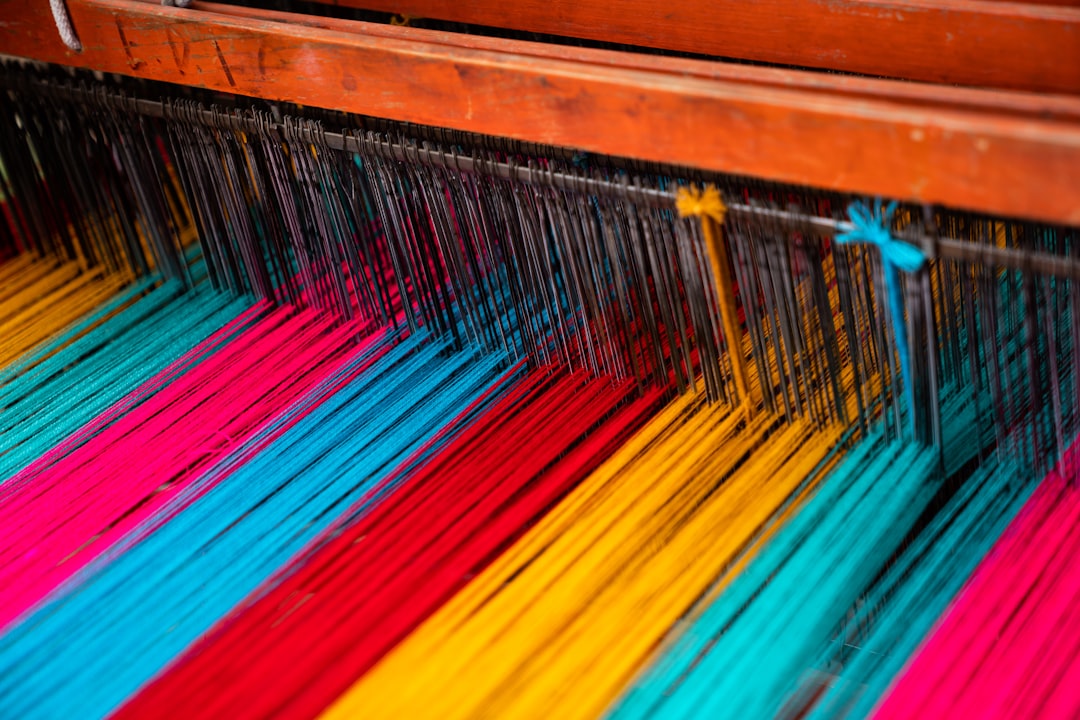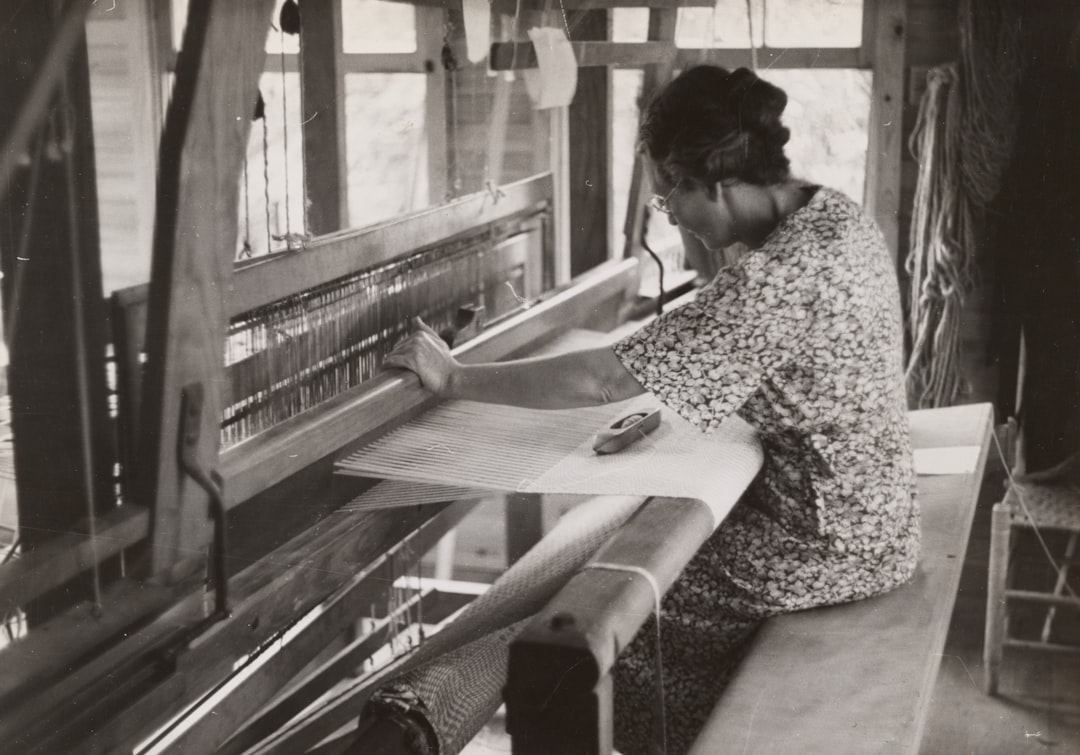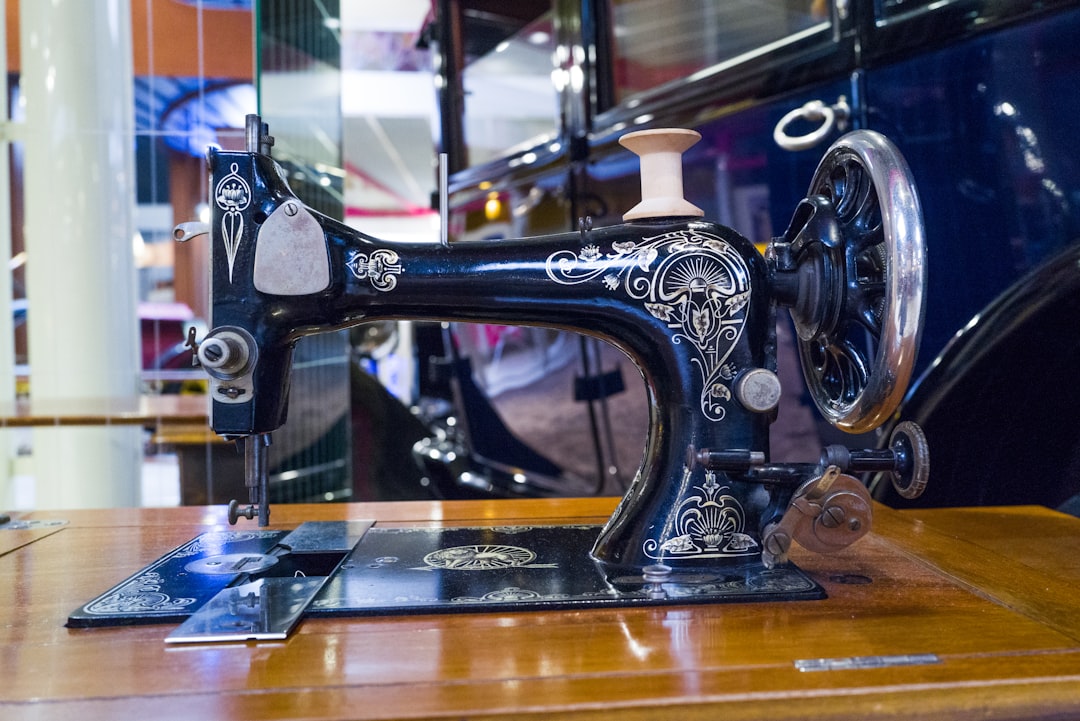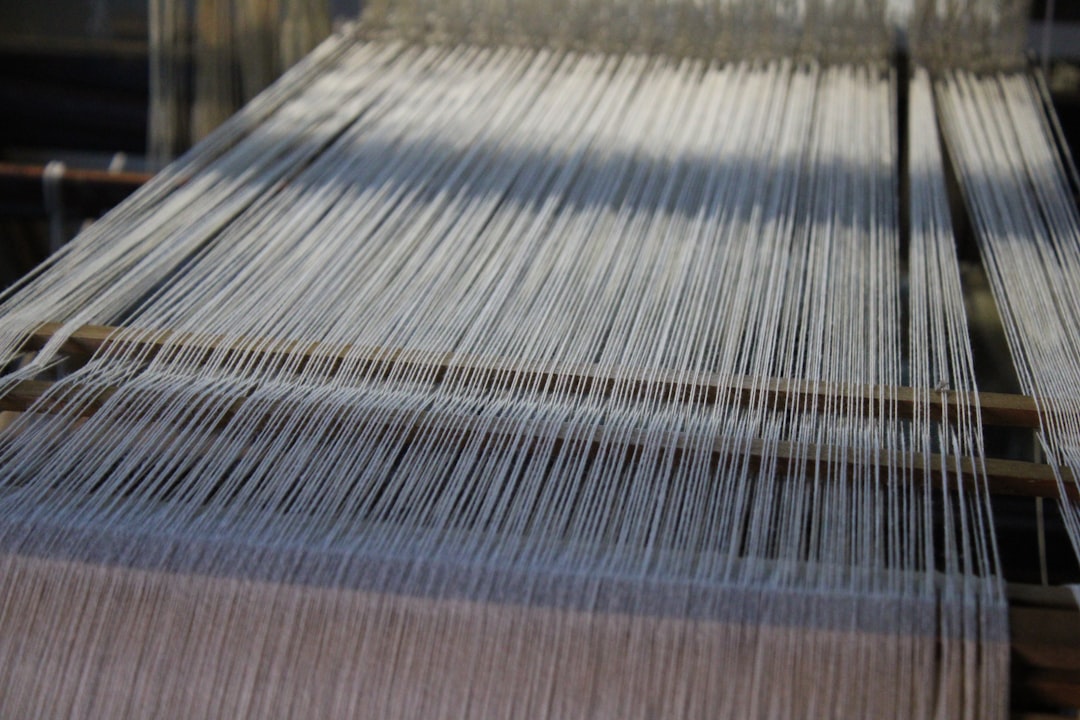
Supercharge your lead generation with a FREE Google Ads audit - no strings attached! See how you can generate more and higher quality leads
Get My Free Google Ads AuditFree consultation

No commitment
Supercharge your lead generation with a FREE LinkedIn Ads audit - no strings attached! See how you can generate more and higher quality leads
Get My Free Google Ads AuditFree consultation

No commitment
Supercharge your lead generation with a FREE Meta Ads audit - no strings attached! See how you can generate more and higher quality leads
Get My Free Google Ads AuditGet My Free LinkedIn Ads AuditGet My Free Meta Ads AuditFree consultation

No commitment
Supercharge your lead generation with a FREE Google Ads audit - no strings attached! See how you can generate more and higher quality leads
Get My Free Google Ads AuditFree consultation

No commitment
In today's digital landscape, the integration of online and offline marketing channels is crucial for B2B industries like textile printing equipment. Google Ads serves as a pivotal bridge, capturing the interest of decision-makers at key moments during their search for equipment solutions. By combining nuanced targeting with measurable results, businesses in the textile printing sector can leverage Google Ads to enhance their reach, expedite demand response, and achieve comprehensive ROI measurement. This guide explores the strategic implementation of Google Ads for the textile printing equipment industry, highlighting its ability to complement other marketing efforts and fortify overall sales processes.

Revenue teams in the textile printing equipment sector see measurable gains when campaigns are built on data-backed search strategies and precise audience targeting. With digital transformation accelerating in B2B textiles, high-value leads now demand tailored engagement and seamless online experiences. For a broader overview of top-performing digital ad formats specific to print shops, explore this guide to popular digital ads for print shops.
This step-by-step guide details how to use Google Ads for Textile Printing Equipment to win qualified leads, maximize ad spend, and align paid search with broader textile equipment marketing strategies. Each section covers actionable tactics for keyword selection, audience development, creative optimization, and performance measurement—helping sales and marketing teams unify data and act on real purchase intent.

Securing high-value leads in textile printing equipment is complex, as many procurement specialists and plant managers conduct extensive research without disclosing their intent. Effective demand capture hinges on meeting these prospects where their search begins and engaging them with relevant, timely messaging, making Google Ads an essential channel for influencing critical buying decisions.
Google Ads enables deep targeting that aligns with real-world purchase journeys in the textile industry. Unlike broad digital tactics, it intercepts intent-driven searches from professionals actively evaluating textile printing solutions. This precision ensures budgets prioritize serious buyers, not passive browsers, and can be further amplified by leveraging precise audience intelligence for hyper-personalized ad delivery.
To accelerate your pipeline and capture high-intent buyers in textile printing, get started for free with Sona.


Expanding reach in the textile printing equipment sector requires a focused approach that leverages both advanced digital tactics and deep market insight. High-performing teams consistently outpace competitors by uncovering new demand pockets, optimizing channel mix, and acting on unified data signals across their marketing stack. For a deeper dive into B2B marketing best practices, explore our blog covering B2B marketing.
Textile equipment marketers who combine vertical keyword precision, competitor intelligence, niche community placements, and intent-driven retargeting set the pace for sustainable growth. Modern demand generation platforms amplify these tactics, ensuring every touchpoint is informed by real-time data and every dollar spent advances revenue goals. Ready to take the next step? Get started for free with Sona.

B2B teams in the textile printing equipment sector achieve stronger results when audience segmentation goes beyond basic demographics and taps into intent signals, business model, and purchase readiness. Advanced segmentation strategies empower marketers to engage prospects with precise, context-driven messaging, improving lead quality and campaign ROI.
A unified approach to segmentation drives synergy across digital marketing and retargeting strategies. For an overview of top-performing digital ad formats for print shops, explore how these channels can target segments more effectively. The following framework enables revenue teams to align ad spend with high-value segments and eliminate wasted impressions.
Segmentation, intent overlay, and CRM integration combine to deliver a scalable, high-ROI strategy for textile printing equipment online sales. For ongoing optimization, review marketing attribution best practices or get started for free with Sona to keep your approach adaptive as market trends and buying cycles evolve.

| Industry | Keyword | Monthly Search Volume | Competition Level | Low Bid | High Bid |
| Textile Printing Equipment | direct to fabric printing machine | 70 | HIGH | 1.09 | 2.53 |
| Textile Printing Equipment | epson fabric printer | 70 | HIGH | 1.17 | 2.68 |
| Textile Printing Equipment | digital textile printing machine | 110 | HIGH | 0.79 | 3.28 |
| Textile Printing Equipment | fabric printing machine for home | 210 | HIGH | 0.17 | 1.53 |
| Textile Printing Equipment | cloth printing machine | 320 | HIGH | 0.22 | 2.49 |
| Textile Printing Equipment | fabric printing machine | 1000 | HIGH | 0.39 | 2.07 |
| Textile Printing Equipment | textile printing machine | 1000 | HIGH | 0.39 | 2.07 |
Identifying and deploying high-intent keywords is essential for driving qualified leads in the textile printing equipment sector. Search queries that reference specific equipment models, local suppliers, or urgent purchase needs often signal a prospect ready to buy. Marketers who capitalize on these terms can capture demand at its peak, minimizing wasted spend and accelerating deal velocity. For additional strategies, explore this B2B marketing reports guide.
Incorporating local modifiers such as city names, regions, or terms like "near me" into your keyword list consistently boosts conversion rates for Textile Printing Equipment Marketing campaigns. Buyers searching with these modifiers demonstrate geographic intent and a preference for nearby solutions, increasing the likelihood of direct contact and rapid sales conversations. To see which digital ad formats perform best for print shops, review this top-performing digital ad formats overview.
Long-tail, niche keywords—like "DTG textile printer for athletic wear Los Angeles" or "eco-friendly textile printing press supplier UK"—deliver even greater efficiency by filtering out casual browsers and surfacing only those with specific requirements. Negative keyword lists remain crucial for budget control and audience precision. Excluding terms related to DIY, unrelated printing industries, or consumer-level products prevents non-commercial traffic from diluting campaign performance. By leveraging real-time audience segmentation, marketers can unify fragmented account data, identifying high-value segments and matching keywords to real-time buyer intent. This approach supports dynamic audience updates, allowing campaigns to automatically prioritize leads as their purchase signals intensify. To experience these capabilities, get started for free with Sona.
A precise, data-driven approach to Google Ads for Textile Printing Equipment dramatically increases qualified lead flow and pipeline velocity. Modern B2B teams that structure campaigns around intent signals and unified audience data consistently outperform those relying on broad targeting or outdated lists.
Marketers in the textile printing industry can leverage digital channels to reach niche buyers at the exact moment of purchase consideration. By integrating real-time insights and seamless CRM syncing, teams accelerate conversion cycles and eliminate wasted budget. For a practical overview of top-performing formats and strategies, see this guide to digital ads for print shops.
Effective campaigns begin with granular keyword segmentation. Group keywords by equipment type—such as direct-to-garment printers, screen printing presses, or heat transfer machines—and layer in service-based terms like maintenance, leasing, or financing. Localize with geographic modifiers to capture high-intent buyers searching for suppliers or service providers in their region.
Include long-tail queries that reflect the specific language buyers use, such as “industrial DTG printer for cotton” or “automatic screen printing machine installation Dallas.” Apply negative filters to exclude irrelevant traffic, such as hobbyist or DIY audiences, ensuring ad spend targets commercial buyers. Align all keyword choices with the language used in your content marketing and sales collateral to reinforce relevance and quality score.
With unified audience data, marketers can identify which companies and decision-makers are actively researching textile equipment. This enables campaigns to focus on high-value segments and dynamically update keyword clusters as market trends shift.
Ad copy must address the unique pain points of textile printing equipment buyers: reducing production downtime, meeting sustainability standards, and scaling output. Incorporate certifications, such as ISO or eco-friendly credentials, and highlight trust markers like industry awards or years in business.
Encourage urgency with clear incentives—limited-time demos, free consultations, or access to exclusive trade-in offers. Use ad extensions to provide additional value, such as quick links to product catalogs, customer testimonials, or technical support. Ensure every element of the ad aligns with the messaging and positioning seen across your digital presence for maximum consistency.
By leveraging real-time intent data, marketers can further personalize ad copy to reflect the buyer’s current stage in the purchase journey. For example, surfacing a demo offer to accounts that recently engaged with product comparison pages maximizes relevance and improves conversion rates.
Landing pages must deliver a seamless journey from search to conversion. Achieve strict 1:1 alignment between the keyword, ad, and landing page by segmenting content according to equipment type or buyer persona. For instance, direct visitors searching for “high-volume textile printer leasing” to a page focused exclusively on leasing options for industrial printers, with tailored messaging and offers.
Integrate interactive calculators to help buyers estimate ROI, trust badges to reinforce credibility, and clear calls-to-action that guide visitors toward booking a demo or requesting a quote. Segment landing pages by product or service category to further personalize the experience and reduce friction. For additional inspiration on landing page strategies, explore this analysis of digital textile printing growth.
With advanced visitor identification, marketers can adapt landing page content in real time, displaying relevant case studies or testimonials for visitors from targeted companies. This approach significantly increases engagement and drives higher-quality conversions.
Continuous optimization ensures campaign performance scales as the market evolves. Monitor both micro conversions (such as brochure downloads or video views) and macro conversions (like demo bookings or quote requests) to understand where buyers drop off and which assets drive action. Employ smart bidding strategies that allocate budget to the best-performing keywords and audiences.
Run A/B tests on ad creative and landing page layouts to determine which messages and visuals resonate most with target buyers. Import offline conversions—such as closed deals or equipment installations—back into Google Ads to enrich attribution models and measure true ROI.
Integrating campaign data with CRM and sales platforms enables automated audience syncs, ensuring that as leads progress through the funnel, remarketing and upsell campaigns remain accurate and timely. This unified approach to data and optimization helps B2B marketers maximize every dollar spent on PPC campaigns for textile equipment, delivering measurable business growth and actionable insights. Ready to elevate your campaign execution? Get started for free with Sona.
B2B textile printing equipment providers operate in an increasingly sophisticated digital landscape, where granular audience targeting and precise campaign analytics drive sustainable growth. Success hinges on the ability to transform fragmented go-to-market data into actionable insights, ensuring that every advertising dollar is maximized for direct revenue impact.
Maximize visibility and address wasted ad budgets by:
By instilling these Textile Printing Equipment Ad Strategies into your digital execution, you unlock higher-quality lead flow and measurable improvements in ROI. Sophisticated platforms can unify visitor, intent, and CRM data to enable real-time audience updates, more accurate attribution, and seamless campaign-to-sales handoff—empowering B2B revenue teams to build high-impact PPC campaigns for textile equipment that continually outperform static, siloed approaches. To experience this firsthand, get started for free with Sona.
Harnessing the power of Google Ads to market your textile printing equipment effectively can be a game-changer in driving growth and reaching your target audience. By strategically leveraging Google Ads, you have the opportunity to position your products in front of those who are actively searching for solutions like yours.
Throughout this article, we've explored the nuances of creating impactful ad campaigns, from choosing the right ad formats to crafting compelling messaging that resonates with potential buyers. We've discussed the importance of targeting precision, bidding strategies, and analyzing campaign performance to maximize your return on investment.
As you embark on this advertising journey, remember that success lies in continuous learning and adaptation. Embrace the potential of Google Ads to transform your marketing efforts and elevate your business in the competitive textile printing industry. With the right strategies, you can connect with your audience in meaningful ways and drive substantial growth.
To experience the full capabilities of a data-driven approach to your marketing efforts, start for free today. Let us help you unify your go-to-market data and unlock actionable insights that fuel your business success.
The best strategies include using intent-driven keywords, audience segmentation, creative optimization, and performance measurement to target high-value leads and enhance ROI.
You can use CRM and web analytics data to create segmented audience lists and leverage real-time audience signals to ensure relevant buyers see your campaigns.
Start by building targeted keyword lists, develop compelling ad copy, design effective landing pages, and implement data-driven optimizations to ensure high-quality conversions.
KPIs include conversion tracking for demo requests, quote submissions, offline sales calls, and using attribution models to connect ad spend to pipeline value.
Optimizations include leveraging intent data, dynamic audience updates, precise keyword targeting, and integrating with CRM systems for enhanced targeting and follow-up.
The article does not provide specific information on the average cost per click for this niche.
Integrate Google Ads with CRM systems for enriched leads and dynamic audience lists, synchronize with broader demand generation efforts, and use unified data for cross-channel insights.
Ad copy should address pain points like reducing downtime and meeting sustainability standards, and highlight urgency with limited-time offers and trust markers like certifications.
Focus on precise targeting, use niche keyword strategies, leverage real-time audience data, and ensure your ads are highly relevant to capture demand at its peak.
Join results-focused teams combining Sona Platform automation with advanced Google Ads strategies to scale lead generation

Connect your existing CRM

Free Account Enrichment

No setup fees
No commitment required

Free consultation

Get a custom Google Ads roadmap for your business
Join results-focused teams combining Sona Platform automation with advanced Meta Ads strategies to scale lead generation

Connect your existing CRM

Free Account Enrichment

No setup fees
No commitment required

Free consultation

Get a custom Google Ads roadmap for your business
Join results-focused teams combining Sona Platform automation with advanced LinkedIn Ads strategies to scale lead generation

Connect your existing CRM

Free Account Enrichment

No setup fees
No commitment required

Free consultation

Get a custom Google Ads roadmap for your business
Join results-focused teams using Sona Platform automation to activate unified sales and marketing data, maximize ROI on marketing investments, and drive measurable growth

Connect your existing CRM

Free Account Enrichment

No setup fees
No commitment required

Free consultation

Get a custom Google Ads roadmap for your business
Over 500+ auto detailing businesses trust our platform to grow their revenue
Join results-focused teams using Sona Platform automation to activate unified sales and marketing data, maximize ROI on marketing investments, and drive measurable growth

Connect your existing CRM

Free Account Enrichment

No setup fees
No commitment required

Free consultation

Get a custom Google Ads roadmap for your business
Over 500+ auto detailing businesses trust our platform to grow their revenue
Join results-focused teams using Sona Platform automation to activate unified sales and marketing data, maximize ROI on marketing investments, and drive measurable growth

Connect your existing CRM

Free Account Enrichment

No setup fees
No commitment required

Free consultation

Get a custom Google Ads roadmap for your business
Over 500+ auto detailing businesses trust our platform to grow their revenue
Our team of experts can implement your Google Ads campaigns, then show you how Sona helps you manage exceptional campaign performance and sales.
Schedule your FREE 15-minute strategy sessionOur team of experts can implement your Meta Ads campaigns, then show you how Sona helps you manage exceptional campaign performance and sales.
Schedule your FREE 15-minute strategy sessionOur team of experts can implement your LinkedIn Ads campaigns, then show you how Sona helps you manage exceptional campaign performance and sales.
Schedule your FREE 15-minute strategy sessionOur team of experts can help improve your demand generation strategy, and can show you how advanced attribution and data activation can help you realize more opportunities and improve sales performance.
Schedule your FREE 30-minute strategy sessionOur team of experts can help improve your demand generation strategy, and can show you how advanced attribution and data activation can help you realize more opportunities and improve sales performance.
Schedule your FREE 30-minute strategy sessionOur team of experts can help improve your demand generation strategy, and can show you how advanced attribution and data activation can help you realize more opportunities and improve sales performance.
Schedule your FREE 30-minute strategy sessionOur team of experts can help improve your demand generation strategy, and can show you how advanced attribution and data activation can help you realize more opportunities and improve sales performance.
Schedule your FREE 30-minute strategy session





Launch campaigns that generate qualified leads in 30 days or less.
